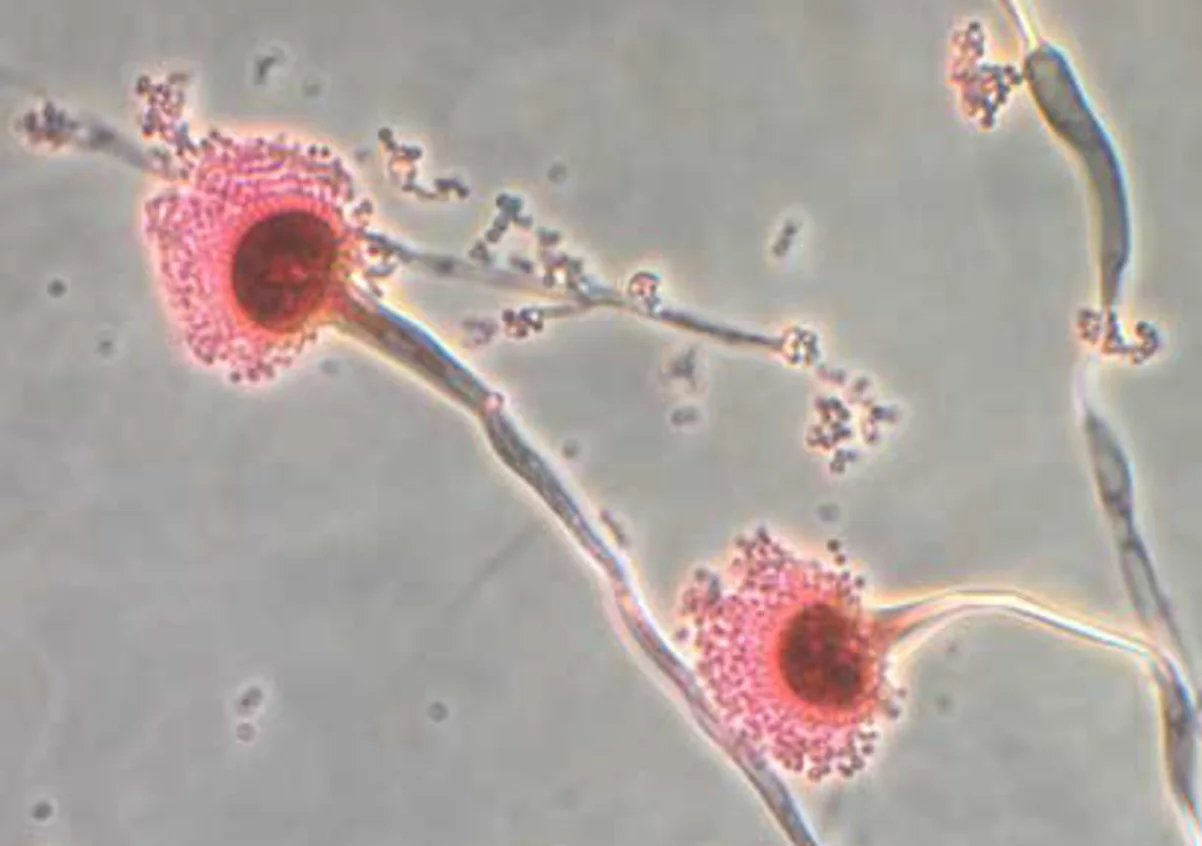
Aspergillus, a type of fungi, is expanding its range as the world heats up, according to new research. Centres for Disease Control/Reuters
The Silent Spread: How Climate Change Is Fueling a Fungal Health Crisis
We often think of fungi as the harmless mold on old bread or the mushrooms on our pizza. But the truth is, some fungi are quietly becoming one of the biggest emerging threats to global health—and climate change is giving them room to grow.
A new study from the University of Manchester has issued a stark warning: infection-causing fungi like Aspergillus are poised to expand into new territories as the planet heats up. And the world is largely unprepared.
Fungi are everywhere—literally. Found in soil, compost, and even water, these adaptable organisms play a crucial role in ecosystems. But some species can also wreak havoc on human health. Fungal infections are estimated to kill 2.5 million people each year, and that figure might be even higher due to underreporting.
Despite their deadly potential, fungi remain one of the least studied groups of pathogens. “Fungi are relatively under-researched compared to viruses and parasites,” said Norman van Rijn, a climate and infectious disease expert and one of the lead researchers of the study.
Using climate models and simulations, van Rijn’s team mapped the future spread of Aspergillus, a common genus of fungi responsible for aspergillosis—a serious disease that primarily affects the lungs. The findings are concerning.
Fungi on the Move
As temperatures rise, certain Aspergillus species are predicted to move into new regions, including parts of North America, Europe, China, and Russia. One species in particular, Aspergillus flavus, thrives in hot climates and could expand its range by 16% if fossil fuel emissions continue unchecked. This fungus doesn’t just infect humans—it also contaminates food crops, making it a double threat to both public health and food security.
Even more alarming is the projected 77.5% spread of Aspergillus fumigatus, a species that prefers milder climates. It could reach as far north as the Arctic Circle by 2100, potentially affecting millions more people in Europe and beyond.
The World Health Organization has already classified Aspergillus flavus as a critical fungal pathogen due to its growing resistance to treatment. With only four classes of antifungal drugs currently available, we’re running out of options.
Why This Matters
For most healthy people, inhaling fungal spores (which happens daily) isn’t a problem. Our immune systems clear them out without much fuss. But for those with weakened lungs or compromised immune systems—such as cancer patients, transplant recipients, and people recovering from severe flu or COVID-19—these spores can become deadly.
Van Rijn describes the infection process bluntly: if the spores aren’t cleared, the fungus begins to grow inside the body—essentially eating it from the inside out. Mortality rates for aspergillosis range from 20% to 40%, and diagnosing it can be tricky. Symptoms like fever and coughing are often mistaken for more common illnesses.
And it’s not just health that’s at risk. Fungi also support soil ecosystems, so their movement—or disappearance—can destabilize the environments we rely on for agriculture and biodiversity.
Climate Change Is Changing the Game
Rising temperatures aren’t just expanding fungi’s range. They may also be making fungi more heat-tolerant—better able to survive inside the human body. On top of that, extreme weather events like droughts, floods, and heatwaves can disperse fungal spores across vast distances. After the 2011 tornado in Joplin, Missouri, for example, a spike in fungal disease was observed.
Scientists say we need to take the threat seriously.
Elaine Bignell, co-director of the MRC Centre for Medical Mycology, calls the study a wake-up call. “It shines a light on how under-prepared we are for the rise of fungal diseases,” she said.
Data is another hurdle. Justin Remais, a public health researcher at UC Berkeley, is leading a study tracking over 100 million U.S. patients. His team found more than 20,000 cases of aspergillosis from 2013 to 2023—and the number is growing by 5% each year.
“We’re only beginning to understand how climate change is contributing,” Remais said.
Time to Pay Attention
Thanks to pop culture hits like HBO’s The Last of Us, there’s new interest in the idea of fungal pandemics. While the show is science fiction, the reality is serious: fungi are already killing millions each year, and their reach is only expanding.
Unlike bacteria and viruses, fungal infections don’t get nearly the same level of funding or awareness. That needs to change.
Because if there’s one thing this study makes clear, it’s that fungal pathogens are on the rise—and anyone could be affected in the future.